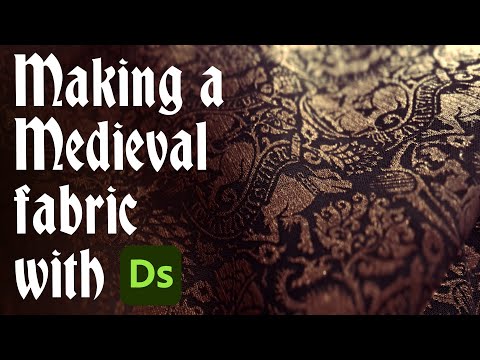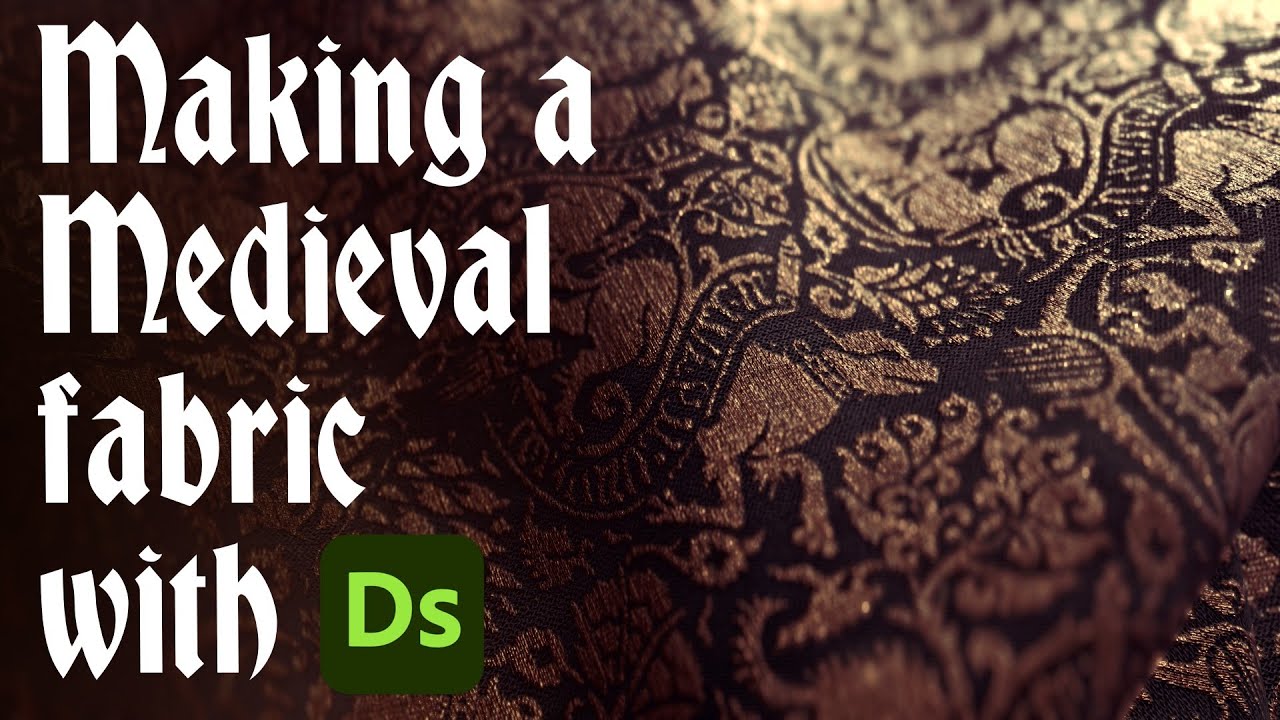Discover the captivating world of medieval fabric patterns, where artistry and tradition intertwine to create timeless masterpieces. Step back in time as you delve into intricate designs that showcase the unparalleled craftsmanship of skilled artisans. These exquisite patterns transport you to a bygone era, where every stitch tells a story of the medieval age. Immerse yourself in the rich cultural tapestry woven into these fabrics, as each pattern reflects the unique heritage and symbolism of the medieval period. From elaborate tapestries depicting epic tales to delicate embroideries adorning garments, the attention to detail is unparalleled. Marvel at the meticulous precision and the intricate motifs that bring each fabric to life. The interplay of colors and textures creates a visual feast for the eyes, evoking a sense of awe and wonder. Explore the ornate patterns that adorned the clothing and interiors of nobility, revealing a glimpse into their opulent lifestyle. Whether you are a history enthusiast or simply appreciate the beauty of art, these medieval fabric patterns will transport you to a world of elegance and splendor.

The Beauty of Medieval Fabric Patterns
Medieval fabric patterns have an undeniable allure that continues to captivate us centuries later. These intricate designs not only adorned the clothing and tapestries of the medieval era but also represented cultural and social significance. Let's delve into the world of medieval fabric patterns, exploring their origins, symbolism, and enduring popularity.
The Origins of Medieval Fabric Patterns
The origins of medieval fabric patterns can be traced back to various sources, including religious iconography, nature, and historical events. Medieval artisans drew inspiration from the world around them, incorporating elements such as flowers, animals, and mythical creatures into their designs. These patterns were meticulously handcrafted, often using techniques such as embroidery, weaving, and tapestry.
One of the earliest examples of medieval fabric patterns is the Bayeux Tapestry, an embroidered cloth depicting the events leading up to the Norman conquest of England in 1066. This masterpiece showcases the intricate stitchwork and attention to detail that characterized medieval fabric patterns.
The Symbolism of Medieval Fabric Patterns
Medieval fabric patterns were not merely decorative; they also conveyed symbolic meanings. Each pattern held its own significance, often representing aspects of the wearer's identity or beliefs. For instance, the fleur-de-lis pattern, characterized by stylized lilies, was widely used in medieval heraldry and represented purity and royalty.
Similarly, heraldic animals, such as lions and eagles, symbolized courage and strength. These patterns adorned the garments of knights and nobles, reflecting their social status and valor on the battlefield.
Religious motifs were also prevalent in medieval fabric patterns. Crosses, angels, and saints were commonly incorporated into designs, reflecting the deep religious devotion of the era. These patterns adorned religious vestments, such as chasubles and copes, worn by clergy members during religious ceremonies.
The Enduring Popularity of Medieval Fabric Patterns
Despite the passage of time, medieval fabric patterns continue to captivate fashion designers, interior decorators, and art enthusiasts alike. Their timeless appeal lies in their intricate designs and rich symbolism, which add a touch of history and elegance to any setting.
Contemporary fashion often pays homage to medieval fabric patterns, incorporating them into modern designs. Runways frequently showcase garments featuring intricate embroidery, tapestry-inspired prints, and motifs reminiscent of the medieval era. This fusion of old and new allows us to appreciate the craftsmanship of medieval fabric patterns in a contemporary context.
Furthermore, medieval fabric patterns find their place in interior design, adding a sense of grandeur and sophistication to spaces. Tapestry wall hangings and upholstered furniture featuring medieval motifs evoke a sense of history and create a unique ambiance. These patterns allow us to connect with the past while adding a touch of elegance to our surroundings.
Preserving and Reviving Medieval Fabric Patterns
Preserving and reviving medieval fabric patterns is crucial for maintaining our connection with the past. Museums around the world house collections of medieval textiles, showcasing the intricate patterns and craftsmanship of the era. These exhibits not only educate visitors about the historical significance of fabric patterns but also inspire contemporary artists and designers.
Additionally, artisans and textile enthusiasts continue to study and replicate medieval fabric patterns, ensuring their preservation for future generations. Through meticulous research and dedication, these individuals revive ancient techniques and recreate the intricate designs that once adorned the clothing and tapestries of medieval times.
Conclusion
Medieval fabric patterns are more than mere decorations; they are windows into the past, reflecting the values, beliefs, and artistic sensibilities of a bygone era. Their enduring popularity speaks to their timeless appeal and the cultural significance they hold. As we continue to admire and incorporate these patterns into our lives, we pay homage to the craftsmanship and artistry of those medieval artisans who brought them to life.
Creating Medieval Fabric: A Beginner's Guide to Substance Designer
Medieval Fabric Patterns
Medieval Fabric Patterns
| Pattern | Description | Significance |
|---|---|---|
| Chevron | The chevron pattern, characterized by a series of inverted V-shaped lines, was commonly used in medieval fabric design. It symbolized the protection of divine forces and was often associated with knights and nobility. | This pattern was frequently incorporated into the clothing of knights and nobles, serving as a visual representation of their valor and social status. |
| Fleur-de-lis | The fleur-de-lis, a stylized lily flower, was a popular motif in medieval fabric patterns. It represented the Holy Trinity and was closely associated with the French monarchy and nobility. | By incorporating the fleur-de-lis into their garments, medieval nobles showcased their allegiance to the French crown and their status within the feudal hierarchy. |
| Heraldic | Heraldic patterns, consisting of various symbols and colors, were used to represent noble families and their lineage. These patterns served as a way of identifying individuals on the battlefield and during tournaments. | The use of heraldic patterns allowed knights and nobles to display their family heritage and distinguish themselves in battle, fostering a sense of identity and honor. |
| Damask | Damask patterns, characterized by intricate floral or geometric designs, were highly sought-after in medieval times. They were often woven using silk threads, resulting in luxurious and elegant fabrics. | Wearing damask fabric was a display of wealth and status. Only the affluent could afford such intricate and expensive textiles, making it a symbol of social standing. |
| Herringbone | The herringbone pattern, characterized by a series of V-shaped lines that resemble the skeleton of a fish, was commonly used in medieval fabric design. It added visual interest and texture to garments. | The herringbone pattern not only enhanced the aesthetics of medieval clothing but also provided structural stability, ensuring that the fabric remained durable and long-lasting. |
As an expert in medieval fabric patterns, it is fascinating to observe the rich symbolism and cultural significance embedded within these designs. Each pattern tells a story, representing the values, beliefs, and social hierarchies of the medieval world. By examining and appreciating these intricate fabric patterns, we gain valuable insights into the artistry and craftsmanship of this bygone era.

